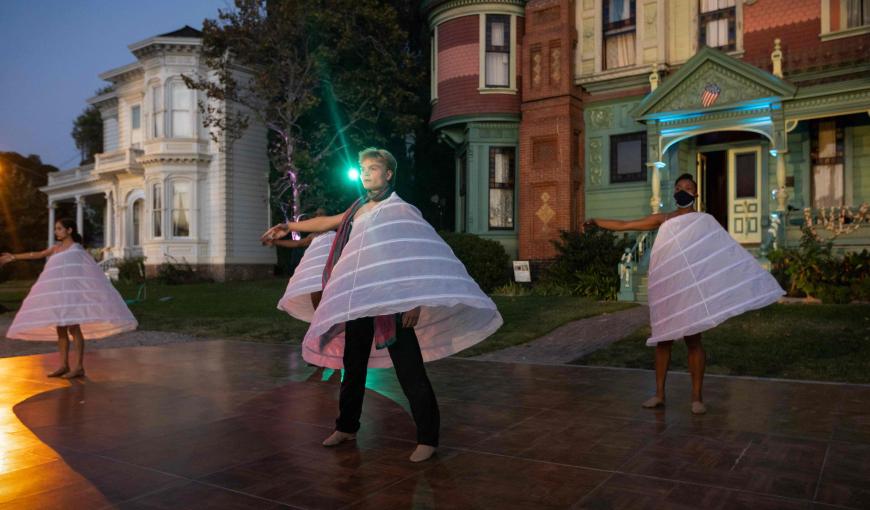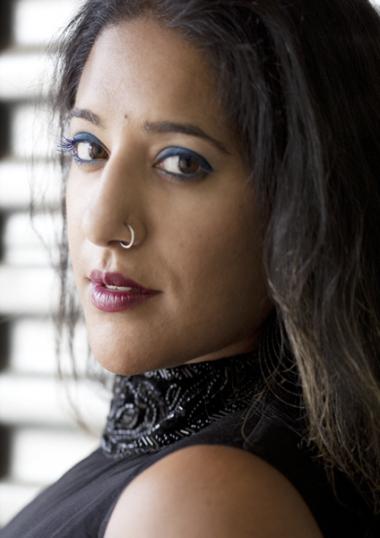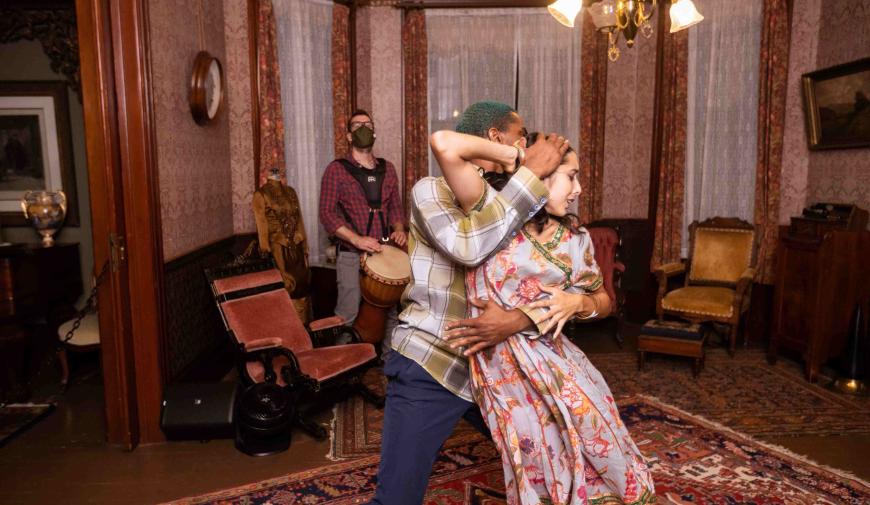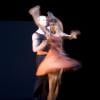
“I was driving down the 110 freeway, wondering what that spired church was, and when I stood in front of it, I thought, ‘This is where we’re going to do our pandemic dance. I need this grand, incredible place.’”
That’s Achinta S. McDaniel, first generation South Asian American and founder of Los Angeles-based Blue13 Dance Company, explaining the genesis of the troupe’s new immersive dance experience, Soliloquy. The work, for 20 dancers with a supporting cast of seven, will be performed May 31 – June 2 at Heritage Square Museum. Integral to the dance is the church there, one of the museum’s eight historic structures built during the Victorian era and located on acres of landscaped grounds near downtown Los Angeles. Soliloquy grew out of Shaadi (Hindi for “wedding”), Blue13’s 2021 performance at Heritage Square.

In her choreography, McDaniel, who founded Blue13 in 1999 and is a powerful voice in L.A.’s Indian community, makes use of techniques including bhangra, kathak, and Bollywood, as well as hip-hop, ballet, jazz, tap, and modern dance — reflecting her upbringing. Soliloquy shares individual stories, through dance, of what the pandemic lockdown and being disconnected from touch, laughter, and sharing felt like, while also investigating the flattening of human connection through social media and screens.
The audience will also, in effect, become active participants in this indoor-outdoor experience, traversing the grounds and manors of Heritage Square. Explained McDaniel, whose storytelling through dance is a central tenet of Blue13: “I was thinking about solos and how iconic and different and strange that place is. Each house, the chapel, the apothecary, has its own personality, its own nature to it. And so do each of the dancers.
“These past three years,” recalled McDaniel, “we had a shared moment of being connected to each other on screens — on Zoom and Instagram [for example] — and [yet] there was a heightened feeling of loneliness with devices meant to connect us.
“The piece is remarking on that,” added McDaniel, who received a National Endowment for the Arts grant to make Soliloquy and develop it with the dancers, “what it felt like, how we’re coming out of the pandemic. We’re peering through windows and watching a solo take place, and now it takes a step further [because] audiences are able to go in and become active participants in the piece.”
As for the score, McDaniel acknowledged that it “ranges wildly [and] is also a chance score. There’s some Western classical, a Bach piece in the chapel. There’s also a playlist by one of the soloists that’s a mix of rock, alternative music, [some] Jack White, [and] Charles Mingus. The audiences select songs through their iPhones and smartphones, and [it’s heard] from speakers in these Victorian houses. A dancer will hand an audience member a [playlist] and enable them by touch, sound, [or] gesture [to select a song].”

Soliloquy clocks in at two hours and 15 minutes, and performances will take place within all eight museum buildings. Scenes will be danced in a ballroom, a dining room where audiences will witness a family dinner party, and the chapel. The work, McDaniel pointed out, “gives autonomy to audience members. They choose their own adventure. You might follow a woman with a green sash, [or] there’s a soloist in a bedroom upstairs in the Perry Mansion, and there are three pieces happening outside.
“Everyone will not experience everything, and I’m happy about that,” acknowledge McDaniel. “It speaks to the ephemeral nature of dance. We will never experience it in the same way.”




